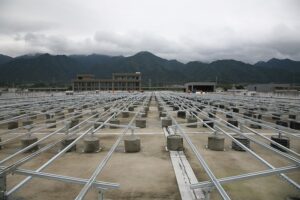
Clean Energy: A Comprehensive Guide for Sustainable Living
As the world continues to grapple with the effects of climate change and dwindling natural resources, the shift towards clean energy has never been more crucial. Clean energy refers to energy derived from renewable, zero-emission sources that are naturally replenished. This comprehensive guide will explore the various forms of clean energy, their benefits, challenges, and actionable steps towards sustainable living through clean energy sources.
Understanding Clean Energy
Clean energy encompasses a wide array of energy sources that contribute minimally or not at all to pollution. Unlike fossil fuels, which emit harmful greenhouse gases when burned, clean energy utilizes resources that are sustainable and have a negligible environmental impact. The primary types of clean energy include:
Solar Energy
Solar energy captures sunlight using photovoltaic cells or solar thermal plants. It has grown significantly in popularity as the technology has become more affordable and efficient. Solar panels can be installed on residential rooftops or in large-scale solar farms, generating electricity that can power homes or feed into the grid.
Wind Energy
Wind energy harnesses the power of wind through turbines. These turbines convert wind kinetic energy into mechanical energy, which is then turned into electricity. Wind farms can be located on land or offshore, and they provide a significant and growing percentage of the global electricity supply.
Hydropower
Hydropower is one of the oldest forms of energy generation, utilizing flowing water to produce electricity. Dams or run-of-the-river systems can harness this energy. While hydropower is a clean source, large dams can significantly impact local ecosystems and communities, raising concerns about sustainability in certain contexts.
Geothermal Energy
Geothermal energy taps into the heat from the Earth’s core. This heat can be used for direct heating applications or converted into electricity. Geothermal power plants are typically located in areas with high volcanic activity, making it a less common but effective source of renewable energy.
Biomass Energy
Biomass energy is derived from organic materials, such as plant and animal waste. When burned, these materials release energy that can be converted into electricity or heat. While considered renewable, it is essential to manage biomass sources sustainably to minimize environmental impact.
Benefits of Clean Energy
The transition to clean energy holds numerous benefits for individuals, communities, and the planet. Some of the most critical advantages include:
Environmental Protection
Clean energy reduces greenhouse gas emissions that contribute to climate change. By decreasing reliance on fossil fuels, we can minimize air pollution and its associated health risks.
Energy Independence
Investing in clean energy can lead to increased energy independence. Countries that harness their renewable resources can reduce their reliance on imported fuels, enhancing energy security and stability.
Economic Opportunities
The clean energy sector generates substantial job opportunities. From manufacturing and installation to maintenance and research, the transition towards renewable energy creates a skilled workforce and stimulates economic growth.
Cost-Effectiveness
As technology improves and production costs decrease, renewable energy sources have become increasingly cost-effective. In many regions, wind and solar are now among the cheapest forms of electricity generation available.
Challenges of Clean Energy
While the benefits of clean energy are compelling, several challenges impede its widespread adoption. Understanding these difficulties is crucial for promoting effective solutions.
Intermittency and Reliability
Many renewable energy sources, particularly solar and wind, are intermittent by nature. Their ability to produce energy depends on weather conditions and time of day, necessitating advancements in energy storage and grid management to ensure reliability.
Initial Costs and Investment
Although the costs for renewable energy technology are declining, the initial investment for setting up infrastructure can still be high. Governments and private entities must collaborate to provide funding and incentives to promote a shift towards clean energy.
Infrastructure Limitations
Existing energy infrastructure in many regions is designed for fossil fuels. Upgrading the grid to accommodate sustainable energy sources will require significant investment in modernization and technology to improve efficiency and reliability.
Public Awareness and Acceptance
Public perception and understanding of clean energy are critical in driving its adoption. Misinformation and lack of awareness can hinder progress. Education and advocacy are necessary to change public attitudes and behaviors regarding energy consumption.
How to Integrate Clean Energy into Your Lifestyle
Transitioning to a clean energy lifestyle doesn’t solely rely on large-scale projects; individuals can take meaningful steps in their everyday lives. Here are some practical suggestions to integrate clean energy into your home and routine:
Energy Efficiency
Investing in energy-efficient appliances and home upgrades is a crucial first step. Consider LED lighting, energy-efficient windows, and smart thermostats that reduce energy consumption and promote sustainability.
Adopting Solar Power
If feasible, consider installing solar panels on your home or participating in community solar programs. This not only reduces reliance on fossil fuels but also can lead to significant savings on energy bills.
Support Local Renewable Projects
Become involved in local renewable energy initiatives, such as supporting wind or solar farms. Advocacy and community engagement can influence policymaking and encourage broader adoption of clean energy sources.
Use Public Transportation or Carpool
Reducing reliance on single-occupancy vehicles lowers carbon emissions. Utilize public transport, carpool with friends, or opt for cycling and walking whenever possible to decrease your carbon footprint.
Conserve Energy
Simple actions, such as turning off lights when not in use, unplugging devices, and using energy during off-peak hours, can collectively lead to significant energy savings. Being conscious of your energy consumption habits contributes to a sustainable lifestyle.
Conclusion
The journey towards a clean energy future is a collective responsibility, requiring collaboration from individuals, communities, and governments alike. As we explore the various forms of clean energy and recognize their potential benefits and challenges, it is crucial to take actionable steps towards integrating sustainable practices into our daily lives. By embracing clean energy sources and advocating for sustainable living, we can protect our planet for future generations while ensuring a healthier and more prosperous society.
Further Resources
For those interested in learning more about clean energy and sustainable living, numerous organizations and websites offer valuable resources:
- The Department of Energy (DOE) – Provides comprehensive information on renewable energy technologies.
- The World Resources Institute (WRI) – Offers insights into climate change and sustainability issues.
- The International Renewable Energy Agency (IRENA) – A global hub for policy recommendations and information on renewable energy.
- Local environmental organizations – Many community-focused groups provide resources and support for transitioning to clean energy.
Engage with these resources to deepen your understanding of clean energy and contribute to creating a sustainable future.



